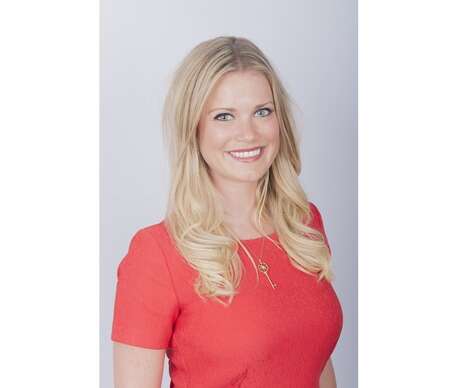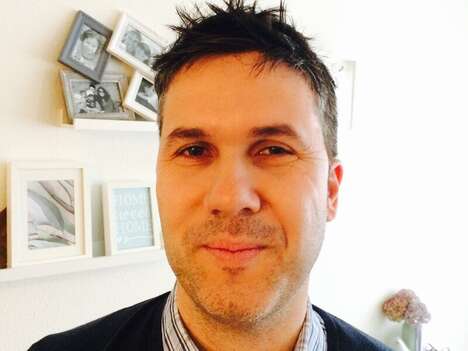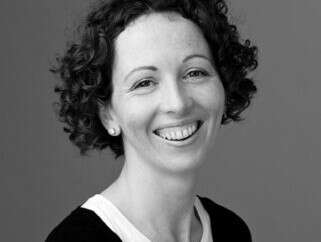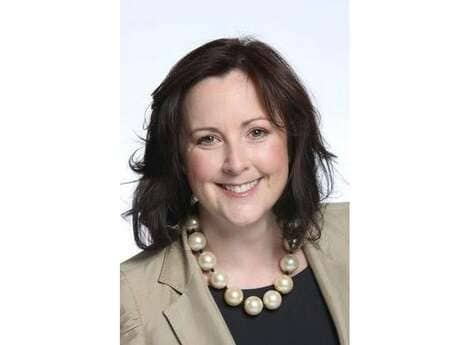Experience and Innovation
Sally Burrell, Innovation Consultant at Burrell Fox
 Working as an innovation consultant, Sally Burrell of Burrell Fox handles a wide variety of clients — from baby food to railways and many industries in between. She spoke with Trend Hunter about finding universal strategies for approaching innovation.
Working as an innovation consultant, Sally Burrell of Burrell Fox handles a wide variety of clients — from baby food to railways and many industries in between. She spoke with Trend Hunter about finding universal strategies for approaching innovation.TH: How do you and your team generate great ideas? Do you have certain rituals to make creativity happen?
SB: I create space and time and try to incorporate ideas into the process and maximize creativity. Things like making sure we’re in a good space, not sitting in front of computers at our desk, and not trying to think while we’re also trying to do admin or the phone is ringing. And then allowing creativity to happen: being in an environment where you can be playful. I think it’s really important to deviate from the task that you’re doing by going on a bit of a tangent and digressing. In terms of getting into the right headspace and opening that right side of the brain, that’s really important.
Likewise, to spark ideas we look to things that are completely unrelated. I’m sure you’re familiar with the concept of unrelated worlds, which is ultimately different ways of looking at problems. So if you’re creating a baby food, you might say: “If British Airways were creating a baby food, what would they create?” And sometimes that might take you to a very different place than you might otherwise go.
What are some barriers to innovation? How do you get around them?
One of the biggest problems is not defining the problem in the first place and not really understanding what you want to do. You can solve that by asking the right questions: are you competing for the present or are you competing for the future? That’s a really big one. Because if you’re competing for the present, then you’ve got a gap in your performance, and you’re talking about restructuring, not innovation. If you’re competing for the future you’re looking for opportunity gaps and new things, so you’re looking for renewal.
And I think one of the biggest problems for organizations is that they judge it by what they’re doing already. They apply the same proving tools that they’re using already to drive the business. When you’re looking for something completely new, you don’t need that; you still need learning, but you don’t need measurements. Trying to measure something that doesn’t exist yet is really difficult, so I always try to get my clients to think in terms of learning and experimenting, not proving: taking a bunch of assumptions and testing those so that you actually gain knowledge instead of proof. You’re trying to increase your knowledge to assumption ratio — you start off with a whole bunch of assumptions, and then you work to test those assumptions and see if they’re actually true. Because you can’t test something brand new with the same KPIs that you use with your current product if you’re truly looking for innovation.
That’s why a lot of great ideas stay as just ideas. Because someone has to prove it to a chief executive who’s judging it through the lens of the current model that he’s already operating.
Do you encounter organizational resistance to your innovation practices?
One of the things that I try and do is make clients part of the team. So when we’re working on a project we’ll rent some space to create a studio where everyone can come and work. I’m basically a one-woman band, but I build freelance teams around each project depending on what each project demands, and likewise I build a physical space. So it might be through a series of workshops or just a studio where people can come and work to free themselves from the confines of their office to get into the groove of the project. Bringing clients along with you so that they can talk to customers, talk to consumers, see the process — they’re involved in bringing the ideas along. And then when they get back, they’re able to tell the story to the executive level. There’s no point in little old me disappearing off, coming up with some great ideas, and presenting them back in the box. The story gets lost.
Wherever possible we also engage the CEOs. We had a project for a brand new railway that they’re about to open next year under London. It goes about a hundred miles and will be bringing another million people a day. We were asked to put together the customer experience design for it, and we had a great team, but the CEO wasn’t involved. We really wanted him to come see it and see what the issues were, so we gave him a task: trying to get across London with a baby buggy. So he did that, and still, to this day, whenever he does interviews on TV, he talks about how this taught him the lesson of actually getting on the ground and using his own system.
How do you identify trends? What resources do you and your team use to spot trends and insights?
Making sure that I’m working the spectrum and having lots of contact with lots of different people. I try and keep it as young as I can; I’m fortunate to have Gen Z kids, so that’s quite helpful.
But I do also force myself to try doing something different. It’s a sort of freshness habit. We have a thing in London called ‘Morning Glory,’ which is a 5AM start, no-alcohol rave. They’re amazing, and I was the oldest person there by 20 years. Doing things like that, just keeping things fresh, is very important.
Has there ever been an instance where another industry has influenced an innovation at your company?
This was quite a while ago, but we were working with a photocopier manufacturer. You know how photocopiers always get jammed and blocked? You’re printing off a document, you’ve got five seconds to print 30 pages, and suddenly the bloody photocopier gets jammed. So we were thinking, what else gets blocked and jammed? Ok, noses get blocked. So what happens when your nose gets blocked? Well, you always have the other nostril. And we ended up with an idea of having two channels in the photocopier, so when one gets jammed the paper will slip underneath it and go out of another. That was a weird spark of something inspiring something else: a blocked nose to photocopiers.
What are some examples of things you can do to create a culture of innovation?
Trying to make something that is brand new absolutely right the first time is a big mistake, and I see clients do it all the time. You get to the end of the project and go: “Right! We’re going to test market this!” No. Do it small, do it fast, make mistakes, change it. Prototype with sticky back plastic and toilet roll holders if you need to, but prototype early, test it early, iterate, iterate, iterate, and reduce the knowledge to assumption ratio as you go through testing.
Describe the future.
I see an anti-globalization move at both ends of the generational spectrum. It’s manifesting itself at the older end via the whole Trump/Brexit style voting, but I also see it amongst young people who are entering their 20s. At the younger end of the spectrum, people want to make things more manageable and small. That’s something that brands and conventional organizations need to be aware of.
We’re beginning to see some of that in retail here in the UK. For example, we have a massive bookstore called Waterstone’s, and they’ve started opening small bookstore on small high streets that aren’t called Waterstone’s. They’re named after the area where they are, and they take on the needs and the understanding of the local community around them. They’re supplying to the community, and I think that’s an interesting trend that we might see circling back on ourselves. Similar with supermarkets, at least here in the UK. People aren’t willing to get in their car and drive to a massive supermarket to do a 300 pound shop and then come home again. They want to shop local.
So I think over the next ten years we’ll see more anti-globalization manifest itself in both positive and negative ways.
References: burrellfox
Featured Articles

Consistently Searching for Creative Ideas
Sr Director of Marketing at IMAGEN Brands, Jenny Straub

Exploring Exciting Flavors
Sanjiv Gajiwala, Vice President of Marketing at Mike's Hard Lemonade

Sparking Tastes and Trends
Kelli Heinz, Director of Marketing at Bell Flavors & Fragrances

Breaking Out of Fixed Mindsets
Suzanne Zimny, Head of Innovation at Vimto

From Risk to Reward
Alexandre Bastos, Global Director of Innovation at Givaudan

Actionable Innovation in the Workplace
Senior Marketing Manager Nicole Diamant, InterbrandHealth

Diving Deep in Innovation
Ciara Dilley, Senior Director of Global Snacks Innovation at PepsiCo

Tracking Consumer Differences
Elizabeth Mata Sanderson, VP of Strategy & Insights at Univision

The Energy to Innovate
Elaine Robinson, Innovation Programme Manager at Electric Ireland